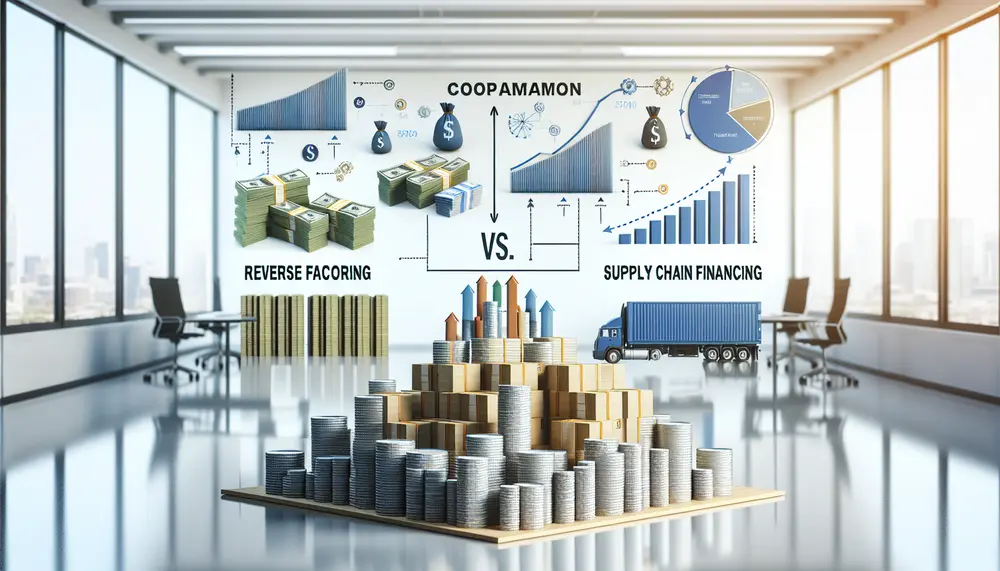Lien
Lien
What Is a Lien?
A lien is a legal claim or a right against assets that are typically used as collateral to satisfy a debt. The lien gives the holder the right to keep possession of property belonging to another person until a debt owed by that person is paid in full.
Liens in Financial Factoring
In financial factoring, a company sells its invoices at a discount to a third party, known as a factor, in exchange for immediate cash. Sometimes, the factor requires a lien on the company's assets as security for the advance. This means if the company fails to fulfill its obligations, the factor may seize the assets secured by the lien.
Types of Liens
There are several types of liens including consensual liens, which are agreed upon by the debtor and creditor, and statutory or non-consensual liens, which might be imposed by law due to unpaid taxes or contractor fees. In factoring, consensual liens are most common, giving the factor a secured interest in the company's assets.
Importance of Understanding Liens
Understanding liens is crucial for businesses engaging in financial factoring. A lien can affect a company's ability to borrow further funds or to sell assets, as it implies a commitment that must be honored prior to other financial undertakings.
Risks Associated with Liens
If a business cannot repay the factor, the lien allows the factor to claim the secured assets. This could significantly impact the business's operations and financial health. Therefore, it's vital to manage liabilities and understand the terms of any lien before entering a factoring agreement.
Lien Release
Once the debt is paid in full, the creditor is usually required to remove the lien, often called a lien release. For businesses, this means once the factor is paid, the lien on assets is lifted, allowing for greater financial flexibility.
Conclusion
A lien is a powerful tool in financial factoring, providing security to the factor while imposing certain restrictions on the business seeking immediate cash flow. Companies must weigh the benefits of quick financing against the potential risks associated with liens on their assets.
Blog Posts with the term: Lien

Reverse factoring, or supply chain financing, involves a company using a third-party financial institution to pay its suppliers quickly after invoice approval, with the buyer repaying on extended terms. This method enhances operational efficiency and supplier loyalty but requires consideration...

Factoring is a financial strategy where businesses sell their invoices to a third party, the factor, for immediate cash flow without incurring debt. It provides not only accelerated funds but also credit management services and can be more flexible than...

Factoring law involves the sale of accounts receivable by a business to a factor for immediate cash, with legal terms like assignment and advance rate being key components. It requires careful consideration of jurisdictional laws, compliance with regulations such as...

Factoring is a financial strategy where businesses sell their invoices to a third party for immediate cash, improving liquidity without incurring new debt. It requires understanding terms like advance rates and fees, choosing the right factoring company with industry expertise,...

Emerging trends in invoice finance include a shift towards flexible, customized solutions, the rise of digital platforms and technology like AI and blockchain, increased focus on sustainability, collaboration with fintech firms, regulatory changes emphasizing transparency and compliance, economic factors such...

Factoring involves selling accounts receivable to a third party at a discount, providing immediate cash flow but incurring costs like service fees and interest rates. Understanding these costs, influenced by factors such as invoice volume and customer creditworthiness, is crucial...

Factoring is a financial transaction where businesses sell their invoices to a factor for immediate cash, without incurring debt. It involves key players—the business selling the invoice, the factoring company (factor), and the debtor—and comes in two forms: recourse and...

Reverse factoring is a buyer-initiated financing solution that leverages the buyer’s credit to offer suppliers faster, lower-cost payments and strengthen supply chain resilience....

Factoring is a financial strategy where businesses sell their invoices to a third party at a discount for immediate cash, with the factor assuming the risk of collecting payments. A factoring flow chart visually outlines each step in this process,...

Factoring fees are costs businesses pay to get immediate cash flow through invoice factoring, influenced by factors like invoice volume and client creditworthiness. The impact of these fees on a business's finances is significant, affecting net income and requiring careful...

Reverse factoring, also known as supply chain financing, is a financial strategy where banks pay company invoices to suppliers quickly for a discount, improving capital efficiency and strengthening buyer-supplier relationships. This method has seen significant growth due to factors like...

The article compares reverse factoring and supply chain financing, highlighting their differences in initiation, process, flexibility, cost structure, and risk management. It explains that while both methods aim to improve cash flow and strengthen financial relationships within the supply chain,...

Reverse Factoring and Confirming are financial tools that enhance cash flow management in businesses by ensuring suppliers receive payments promptly while allowing buyers to manage their finances more effectively. Reverse Factoring is initiated by the buyer to help suppliers finance...

Factoring in Germany involves businesses selling their invoices to a third party at a discount, providing immediate cash flow and mitigating credit risk. The German factoring market is well-established, supported by a strong legal framework, and offers benefits like enhanced...
